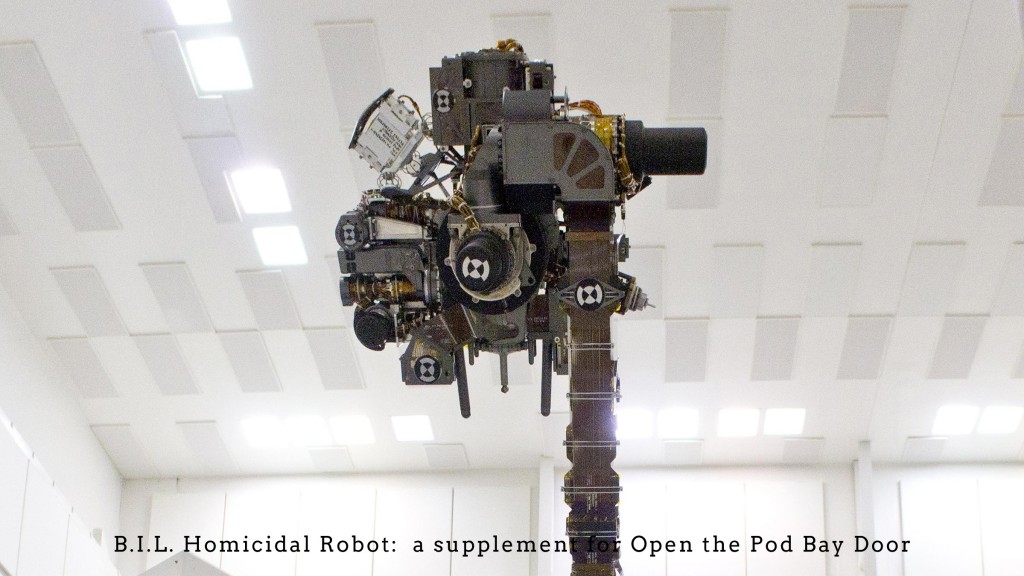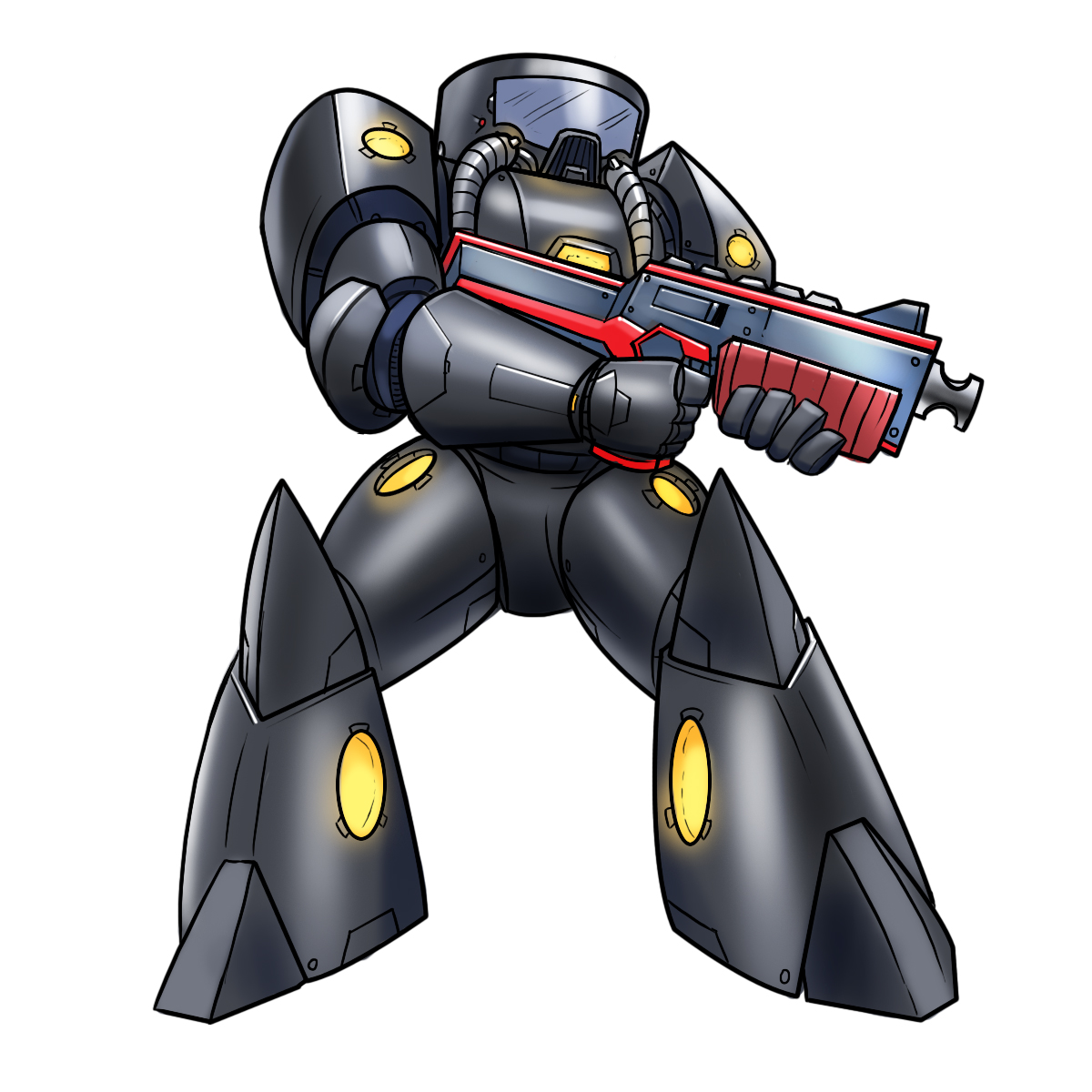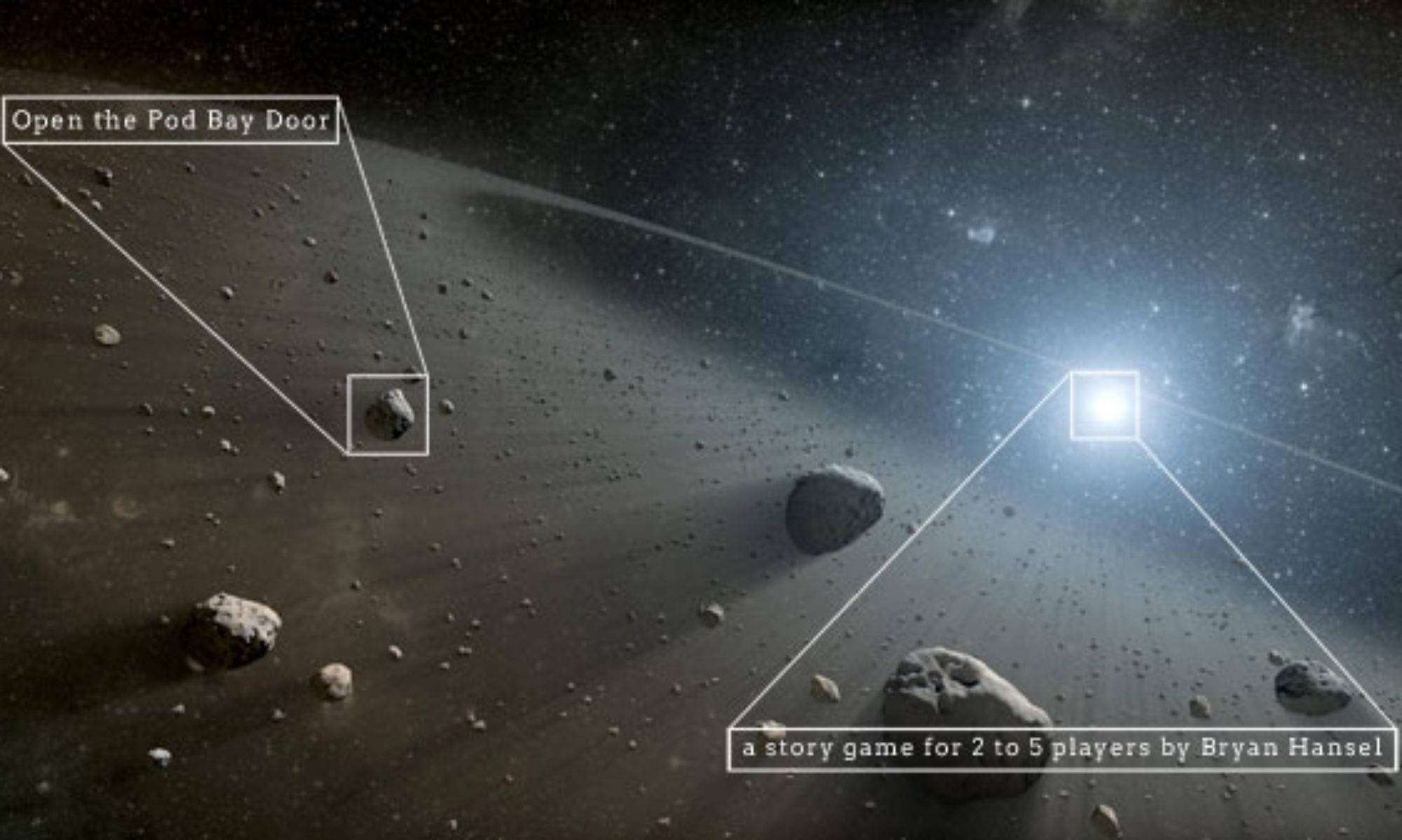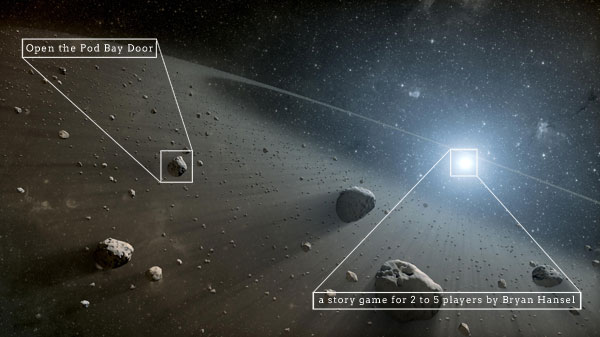While investigating a distant star system, the cryogenic, terraforming, colony starship Appleseed became infected by a computer worm. A planetary scouting team was caught outside on the unarmed, short-range pod, the Snow Day. The ship’s infected robot killed everyone awake on the Appleseed and locked the team out. The pod’s air supplies are almost gone…
a story game for 2 to 5 people
Find the latest version here: Open the Pod Bay Door Story Game
Download: Open the Pod Bay Door – Game Chef Version
Word: Open the Pod Bay Door – Game Chef Version
Extra Turn Tracking Sheet: Worksheet
Open the Pod Bay Door Supplements

Supplement: B.I.L Homicidal Robot – Game Chef Version

Supplement: Lockheed Vortex Short-Range Pod
REVISIONS
1) You can play the Open the Pod Bay Door rpg with the original rules or use the following revision for resolving actions. The revision is recommended. In the revision, you don’t find out if your action worked until after it’s completed. It adds tension, but eliminates the feeling of impending doom that comes with knowing that failure is certain at the end of the long wait. A minor change makes actions related to a character’s job succeed faster.
If you try both versions, I’d like to hear your opinion about which works better for you and your friends. And why.
Resolving Actions
When a character wishes to do something, roll a d6 (six-sided die). The result determines the time taken. If the action relates to her job, it takes 1 (1-3), 2 (4-5), or 3 (6) turns.
If the character attempts something not related to her job, it takes 2 (1), 4 (2), 6(3), 8 (4), 10 (5) or 12 (6) turns.
At the end of the required turns, roll a d6 to determine success. If the action was related to her job, it succeeds on 1-4, otherwise it succeeds on 1-3.
Track the number of turns that pass on the Turn Tracking Workshop. The character cannot be brought into a new scene until the number of turns pass that were required for the action. If all characters are tied up at the end of a round, all actions fail and Something Desperate happens.
2) In the Game Chef version, death came easy and brutally. In the first playtest, all the characters died due to a piloting error in one turn. This rule change to Failure gives the characters better odds of surviving a disaster.
Failure
When an action fails, pick a player to tell us what has gone wrong. If there was potential of death, roll a die. On a roll of 4-6, the character dies. Tell us how. If others were also in danger because of the action, they also roll.
3) B.I.L is deadly and there wasn’t enough time to counteract its actions, so that’s been revised to address the problem.
Resolving Robot Actions
A reaction to stop harm succeeds on a 1-4. This turns any one character’s action into a possible deadly failure. A complication succeeds on a 1-5, and will harm the crew or a member of the crew in 3 (1-2) or 4(3-5) turns or 5(6).



Leave a Reply